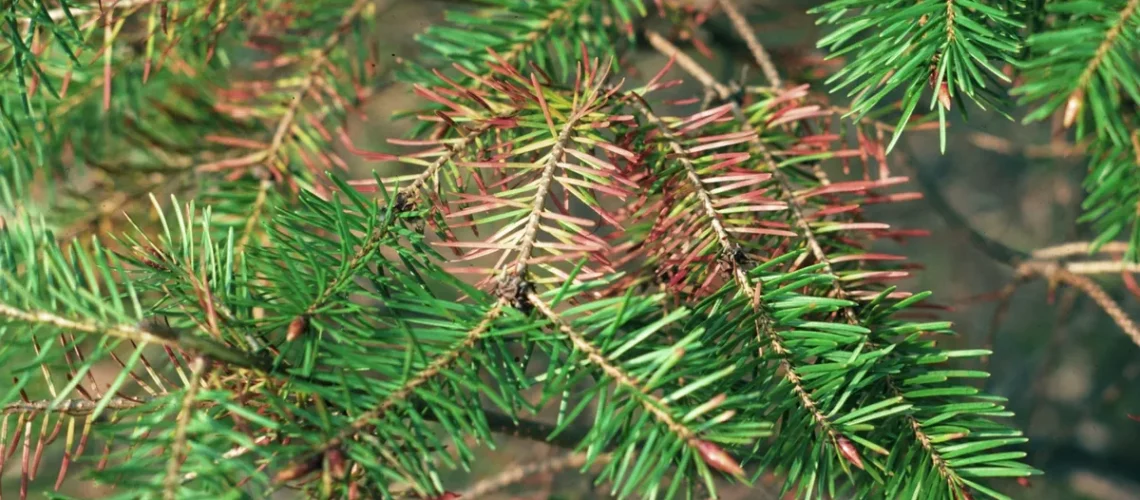Have you noticed the needles on certain coniferous trees, specifically Douglas-fir, are turning red and brittle? You might be thinking the worst and are looking for a pine tree removal service.
If this is you, you’re not alone. An estimated 90% of Douglas-fir in the Comox Valley are experiencing this. But what is causing it?
Swiss needle cast
Right now, British Columbia’s most important and recognizable trees, Douglas-fir, are being attacked by a silent, invisible enemy called Swiss needle cast (SNC).
Over the past five years, this harmful fungus has been infecting more and more trees on Vancouver Island and Southwestern BC. Our recent moister-than-usual springs and milder-than-normal winters have created the perfect conditions for this fungus to infect and spread.
SNC targets plants’ primary survival mechanism—photosynthesis. By attacking the needles and clogging the stomata, trees have trouble absorbing carbon dioxide from the air and rereleasing oxygen into the atmosphere.
Just like when we lack oxygen, when trees are depleted of carbon dioxide it is bad news. The Government of British Columbia has noted a 23% to 60% reduction of growth in trees infected with the fungus due to lack of carbon dioxide and vital nutrients. Without enough energy, the naturally green needles of the Douglas-fir turn a reddish colour, become brittle and over time die and fall off. SNC leaves dry, sparse, sick and frankly ugly-looking trees in its wake.
Do I need a pine tree removal?
It is alarming to see your beautiful evergreens suddenly not-so-green. But before you freak out, let’s consider our options.
Unfortunately, there is no resistance to SNC. The risk of spread is directly tied to the moist weather (thanks Mother Nature!), which puts all of our beautiful Douglas-firs at risk. Fortunately, SNC tends to infect younger trees, 15 years and under, so your mature trees may be safe.
If your trees have been affected, one possible treatment is fungicide. Fungicide has shown to be effective in clearing infections in coniferous trees, and is used extensively by the Christmas tree industry to ensure season after season of holiday foliage. A fungicide treatment often will need to be applied multiple times during the infection window, and annually if weather conditions that favour the fungus continue.
The good news is SNC is rarely fatal to trees. However, starving the tree of carbon dioxide and limiting their ability to perform the process of photosynthesis at optimal levels can make for sad, sick trees. The disease can spread like a wildfire from tree to tree and can quickly turn your luscious forest into a tree sick bay.
We all want healthy, green trees, but this is not always in our control. While we might see our temperate winters and moisture as a blessing, it is a nightmare for the Douglas-firs battling against SNC and trying their best to breathe.
If you are concerned about the health of your Douglas-firs, get in touch today. We’ll give you a free assessment and help you determine whether pine tree removal is necessary.
Image source: USDA Forest Service – North Central Research Station , USDA Forest Service, Bugwood.org

